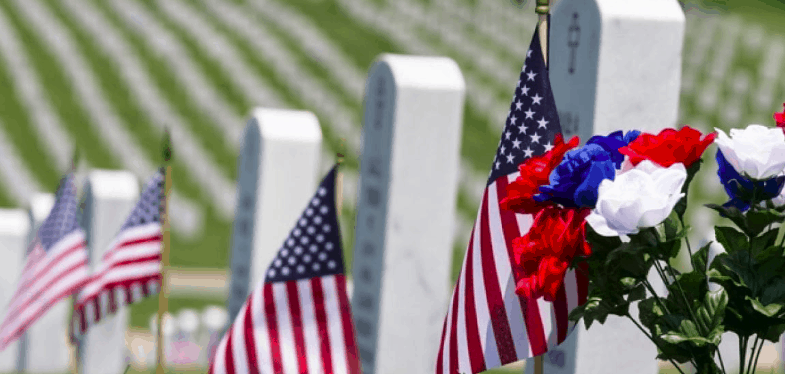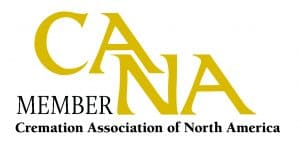
When a loved one who was a member of the United States military forces dies, the family will sometimes wish to arrange a burial with military honors. There are 114 national VA cemeteries in the United States. However, not every state has a national cemetery.
There are also a number of state-run Veteran cemeteries. The main and most well-known military cemetery is Arlington National Cemetery, which is located in Washington, D.C., and administered by the Army.
Who is eligible for a Military Honors Funeral or Veteran’s Funeral?
- Members of the military who were on active duty or a member of the Selected Reserve at the time of death.
- Former members of the United States Military who were on active duty and left the Service under any conditions other than a dishonorable discharge.
- Former members of the US Military who completed at least one term of active duty or period of Selected Reserve duty obligation and left under conditions other than dishonorable.
- Former members of the Selected Reserve who were discharged due to disability incurred in the line of duty or a disability which was aggravated in the line of duty.
What is a Veteran or Military Serviceman entitled to from the VA for a funeral?
As of September 11, 2001, the VA (Department of Veterans Affairs) will provide a headstone or grave marker at no charge for the grave of any deceased veteran considered eligible – regardless of anywhere in the world where the cemetery is located. The officials at veterans’ cemeteries will order such inscriptions as requested by the next of kin of the deceased.
Current law requires that any eligible veteran may be buried with Military Funeral Honors when requested by the family. An honor guard will be provided with a minimum of two members of the Armed Forces. One member of the honor guard will be from the branch of the military in which the deceased veteran served.

The VA will provide a United States flag at no cost to the family of the deceased. The flag is used to drape the coffin of a veteran who is eligible for Military Funeral Honors. The basic aspects of the ceremony include the folding of the flag and the presentation of the flag to the next of kin, usually by a military chaplain. The funeral ceremony is customarily ended by the playing of Taps either by a bugler or by electronic recording – since nowadays; buglers are rarely available.
The custom of playing Taps began in the United States in 1862 during the Civil War. Brigadier General Daniel Butterfield wrote it to replace the earlier “Tattoo” (lights out), which the General thought was inappropriate for a military funeral.
Draping the casket with the national flag is a custom that began during the Napoleonic Wars (1796-1815). At that time, dead soldiers were covered with a flag and removed from the field of battle on a caisson (a two-wheeled vehicle used to hold artillery ammunition attached to a horse-drawn wagon).
A United States flag is not placed in the grave and is not allowed to touch the ground at any time.
Check out our Guide to Caskets to learn more about choosing a burial casket.
What allowances are payable towards a Veteran’s funeral?
The VA will pay a burial allowance of up to $2,000 if the death is service-connected. In addition, they will pay the cost of transportation to the national cemetery nearest the family of the deceased.
The VA will pay a $300 burial and funeral expense allowance for those veterans who were entitled to receive a pension or compensation at the time of death.
A £300 plot allowance is payable if a veteran is not buried in a cemetery under United States Government jurisdiction. However, if a veteran is buried without charge in a state-owned cemetery for veteran burials, then the $300 allowance may go to the state.
Who else may be eligible?
There are a number of other persons who may be eligible for veterans’ burial benefits due to their military-related service. This may include:
Civilians who contributed to military efforts during war-time
National Guard personnel with 20 years of service
Certain Public Health Service personnel
Further Information:
- A cemetery plot or niche in a National VA Cemetery cannot be reserved. Plots are allocated on a needs basis at the time of death.
- National cemeteries do have both casket and cremation plots. However, some National VA Cemeteries may only be able to offer cremation niche space now
- There are no specific casket requirements for a VA cemetery
- The National Cemetery System can search for anyone interred in a National Cemetery. You need vital personal data plus the state from which the individual entered military service.
Veteran’s Burial at Sea
If desired, a Veteran is entitled to a sea burial (or scattering of cremated remains) at sea. The Navy or the US Coast Guard does this, and as it is done at the convenience of these services, it cannot be witnessed.
If a sea burial is requested, the body must be embalmed such that it will be preserved for at least 60 days. A non-sealing casket, bound with 6 bands of nylon and carrying a loaded weight of 150 pounds, must be used, and twenty 2-inch holes are drilled in the top, bottom, and at each end. This ensures that the casket will sink to the depths of the ocean floor and remain there.
Related Articles:
• Ash Scattering
• What to do when a loved one dies away from home
Resources:
United States Department of Veterans Affairs
Military Funeral Honors

